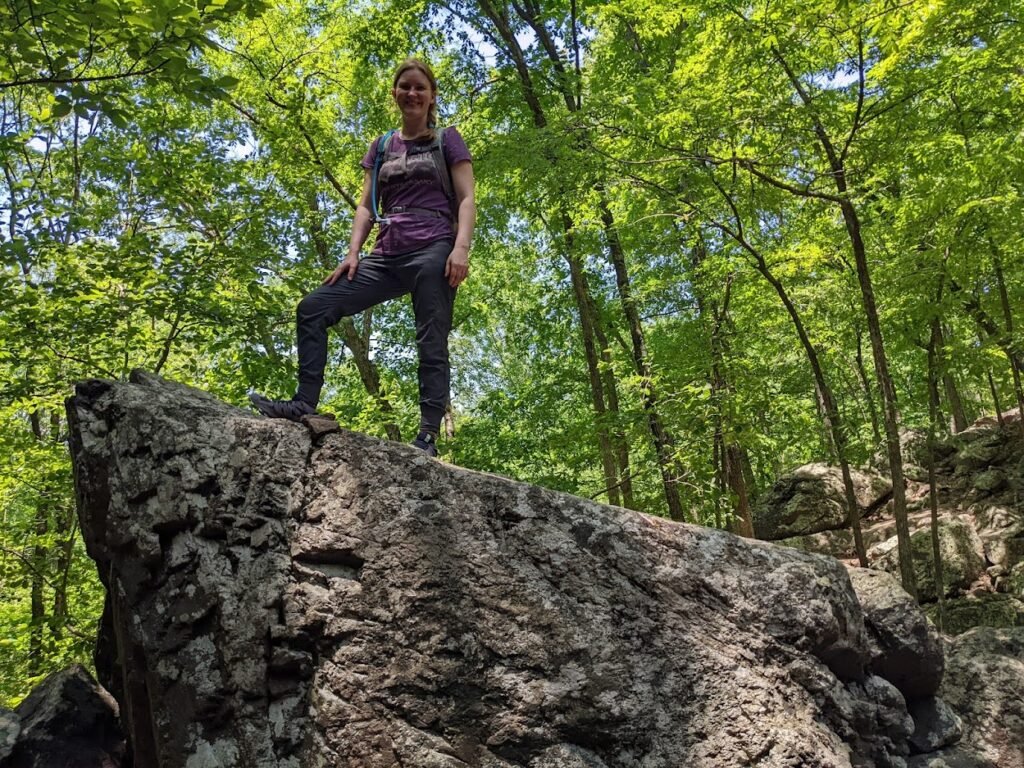
Saint Francois Mountains
Previously, we took a broad look at the physiographic region known as the U.S. Interior Highlands, specifically the Ozarks.
Even though we sometimes call the region the Ozark Mountains, it’s actually a dissected plateau. Tectonic activity uplifted the Ozarks as a slab and, over the eons, rivers cut through the rock, forming the mountainous relief. So, the Ozark Mountains are not proper mountains at all!
In the last article, we noted that one of the subregions of the Ozarks did not fit this general truth. While the Boston Mountains, the Salem Plateau, and the Springfield Plateau cannot be considered actual crags, the Saint Francois range can thumb its nose at its neighbors.
They are the real deal and their story is nearly as old as they come!

When it comes to mountains in North America, two ranges dominate the conversation: the Appalachians and the Rockies. Westerners tout the supremacy of the Rockies, as they feature the edge in height and jagged appearance. Though the height difference is actually offset a bit because the base of most of the Rockies is much higher than the Appalachians (think “mile-high-city” Denver), they might seem far more “mountainous” to many because their peaks sit easily above tree lines. The reason for the relatively low altitudes in the east rises (ha) from the age of the Appalachians. They are old. Very old. 480 million years old. Erosion has robbed this chain of its elevation and its ragged apexes. By contrast, the Rockies are somewhere between 55 and 80 million years old, mere babies on a geological scale. When the Appalachians are 6 to 7 times older than the Rockies, it’s no wonder they are shorter. At one point, the Appalachians were at least as high as the Alps or the Rockies.
As old as the spine of eastern North America is, the Appalachians have nothing on the Saint Francois Mountains.
Most of what covers the surface of the Ozarks today is Lamotte Sandstone. The exception resides in the St. Francois range. This section of the Ozarks is purebred mountain. They were formed by volcanoes and shaped by intrusions of magma. Unlike the rest of the region, the rocks one encounters in the St. Francois Mountains are granitic and rhyolitic. These rocks make the Appalachians look like preteens. The core here is 1.485 billion years old.
Put another way, when the orogenies of the Appalachians formed the great chain, the St. Francois Mountains were already twice as old as the Appalachians are today!
Why is there one spot of real, old mountains in this ocean of limestone? The answer, fittingly, is oceans!

The granite and rhyolite of the St. Francois range were formed in Precambrian times. They constitute the core of the Ozarks and beyond. During the late Cambrian period (approximately 500 million years ago), a vast ocean covered nearly all of what is now North America. In the Midwest, only the St. Francois Mountains eluded being submerged. These crags rose high enough to become islands in a very old sea. We know water never covered the mountains because no marine fossils exist in the chain and a ring of fossilized reefs surrounds them. When the ocean eventually receded, it deposited the layers of sedimentary rocks that top the rest of the Ozarks.
Though we’ll never know for sure how tall the peaks of the St. Francois Mountains reached, to resist the ocean they must have been mammoths. Today, the elevation of the region spans between 500 feet in the valleys and up to 1,772 feet. Compared to the world’s towering features, the Saint Francois Mountains seem tiny, but they have borne billions of years of wear. That they still exist is incredible.
The range makes up for the lack of height with its ruggedness. The Ozark Trail traverses the backbone of the mountains. Walking on the granite, one actually feels the oldness of the rock. They are hard, dense, dark sentinels of time. Crossing the St. Francois mountains will not tax one’s thighs, but agility and balance certainly garner a workout. The concentration of rocks leaves the trails with few restful steps.

As with the origin of the term “Ozarks,” the etymology of St. Francois arrives thanks to the significant French influence in the region.
In the heart of the range begins the St. Francis River. The waterway’s original name was the St. François River. Due to the Catholic influence on New France, much speculation about the origin of the moniker goes to St. Francis of Assisi. However, the early explorers of the Ozark area were not Franciscan. Another theory veers toward St. Francis Xavier, a Jesuit missionary. In the 17th century, famed adventurer Jacques Marquette probed the river. He had spent time at the mission of Francis Xavier in Wisconsin, perhaps leading him to proclaim the river’s name in honor of the Jesuit. Sometime in the early 20th century, locals swapped “Francois” for “Francis,” though the mountain chain retained the French spelling (sans accent). The ways of human language are odd and inconsistent!


The St. Francois Mountains might be the most interesting range with which I was not familiar. A bubble of real mountains on the Ozark Plateau that dwarf the age of the Appalachians and survived a global ocean. A unique set of attributes.
If you’re interested in geology or picturesque, hardy hiking, you could do much worse than to visit them. If you’re into bagging the state High Points, you will inevitably visit them. The ceiling of Missouri resides in the Saint Francois range.
We’ll finish our macro-to-medium-to-micro look at the Ozarks in our next article, as we travel to Taum Sauk Mountain!
Further Reading and Exploration
St. Francois Mountains – Missouri Department of Conservation
Missouri’s Mountains: Then and Now – Sierra Club
St. Francois County Place Names – The State Historical Society of Missouri+
Saint Francois Mountains – Peakbagger
Exploring the St. Francois Mountains – Midwestern Geology














Pingback: Taum Sauk – Missouri’s High Point – themountainsarecalling.earth